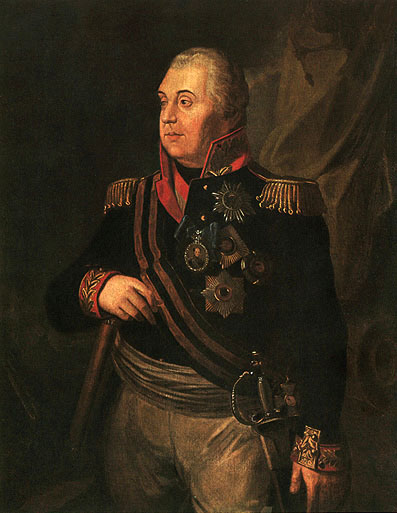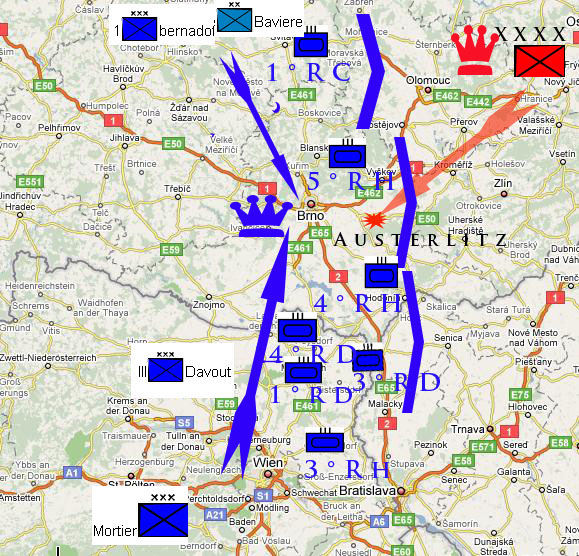
|
||||||||||||||||||||||||||||||||||||||||||||||||||||||
In 1804, Napoleon had already to the war with his Grande Armée. During the precedent years he has reorganized France's economy, and built an new political organization with a system of laws(Codes ) and he has improved French army and navy Organized in corps d'armée commanded by Marshals of the Empire the army had been provided with a prolonged training period at the Camp of Boulogne. From the autumn of 1803 until August 1805,the greater part of the army's strength was deployed along, or within range of, the north-eastern coasts of France. For a landing in England Napoleon ordered the formation of the Boulogne barrack( camp de Boulogne ) able of containing over 150,000 men. The neighboring ports were packed with boats of all categories(barges, gunboats and two-masted prams). But to cross the Channel it was vital that the Royal Navy should be far So he order to Vice-Amiral Villeneuve and a strong squadron slipped on March 30th 1805 to sailed for the West Indies.To put off Nelson and the Royal Navy
All this manoeuvre finish near Trafalgar Cape on October, 1805 But Napoleon according that England invasion was impossible onAugust 25th 1805 he decide to use her Grande Armée against the Europeans Centrals Monarchies and he cancel all the invasion preparations the Imperial Guard received on August 28th to move to Strasbourg and on September 17th 200,000 men head for Germany Napoleon imagine a two part plan. While Massena launched a diversion through North Italy towards the Alpine passes, Napoleon at the head of seven corps intended to sweep through Germany from the Rhine to the Danube, there to seek a decisive battle against the Austrians before their Russian allies could appear in the theatre of war. Prussian intentions were always unclear The Plans of the Third Coalition Prime Minister William Pitt was the brain of this Coalition and he search Continental allies against France First Russia with 27-year-old Tsar Alexander I He had an admiring regard upon Napoleon but the d'Enghien execution and French intentions in the Balkans and Mediterranean are suspicious for him and he began cautious preparations for war in mid-1804 Second Habsburg Emperor, Francis II he has no admiration for France and his Revolution who has “kill” his sister Marie Antoinette On April 11th 1805 the Convention of St Petersburg was signed on 11 April 1805. First with the Russia followed By Austria on 16 July and 9 August Other German and Baltic states, and Bourbon Naples would soon accede. Only Prussia remained out off the coalition France was practically isolated - with only Bavaria and Wurttemberg, and French areas in North Italy, Holland and Switzerland, The planning of this 3rd Coalition planned four connected offensives involving almost half a million men. In the North 15,000 British troops were to be landed at Cuxhaven, aided by 12,000 Swedes and 20,000 Russians collecting at Stralsund for the liberation of the liberation of Hanover, and its restoration to its Elector, George III of Great Britain. In time these forces might be joined by 50,000 Russians commanded by General Bennigsen from Puklawi on the Vistula, and a further force being organized at Riga by Generals Buxhowden and Michelson. These Russian armies would also serve to bring pressure to bear on the King of Prussia; Attack against Bavaria the ally of France with 85000 Austrians commanded by Mack and the Archduke Ferdinand, joined in due time by General Kutuzov at the head of 85,000 Russians. Together they would advance on the Rhine from Ulm. Attack on North Italy, the Archduke John with 25,000 Austrians on Tyrol and the Alpine passes, They wait for a British landed in South Italy Italy. In this theatre, the gifted Archduke Charles was accordingly to command 100,000 to fight the Viceroy Eugene Beauharnais (Napoleon's stepson) and regain Lombardy before invading the south of France. Further a hybrid force of British (from Malta), 17,000 Russians and a force of Albanians, joined by 36,000 Bourbon troops from Sicily, come upon Naples Great Britain agreed also amphibious force for raiding the coasts of France to help and encourage the new Chouan revolt in Brittany The major problems of this plan was the coordination French Plan Napoleon has some 250000 trained troops and a further 150000 new conscripts. The dispositions of French troops was in mid August 1805, French troops were regrouped in four widely separated regions in Hanover, Swabia, Piedmont and Naples. Bernadotte was occupying Hanover, Marmont was in Holland, Gouvion Saint Cyr in Naples and Jourdan commanding under Eugene in Piedmont. Most of the remaining troops were in the coastal camps of north of France, The French allied were Bavaria and Wurttemberg , with 20000 soldiers 100000 men were available to protect the frontiers of France Napoleon had 2 solutions wait for the Arrival of the French Navy and cross the Channel with his troops and after and hypothetic victory against England return in the Continent to fight the Coalised Troops. Or leave the idea of crossing channel and attack the Coalised in the Central Europe immediately . The challenge was important. Ton 10th September Mack invaded Bavaria and occupied Ulm and wait the arrival of Kutusov, With his action Mack attempt French advance from the Rhine through the Black Forest For Napoleon it is a casus belli and a suitable target. Beginning of the Operations
30000 French troops were moving towards Strasbourg to strengthen the frontier defenses and attacks into the Black Forest east of the Rhine to distract Mack's attention for what was happening elsewhere. The Grande Armée was divided in seven corps (the seven torrents) totaling over 200,000 men with Murat's cavalry and the Bavarian army At the beginning the mass of French troops were concentrate on the Channel coast. Unbeknown to Vienna, Napoleon, send the seven corps d‘armée through the Danube Each corps advancing along separate but closely interrelated lines of march steadily converging on the Danube, with the intention of the encircling of Mack's army before the arrivals of Russians Massena with 50,000 men was to contain the Archduke Charles in North Italy, and Gouvion St Cyr was to defend Naples against attack. Only Marshal Brune, with 30,000 men, was left near the Channel to guard against any British attacks. The French maneuver Since August 25th to September 3rd the Grande Armée left the Boulogne camp On September 3rd Napoleon go to Paris ( financial crisis) Meanwhile his major formations rapidly marched eastward to their designated forming-up places on or near the Rhine The left wing go from Hanover/Utrecht to Wurttemberg. The centre and right (Boulogne Camp ) go to Mannheim, Spire, Lauterburg and Strasbourg. With Murat's cavalry Bernadotte, with the French occupation forces in Hanoverians the II° Corps of Marmont, (15000 French and 5000 Dutch ) advance to Mainz; IIIe Corps, 26,000 strong, left Ambleteuse for Mannheim under command of Davout. IV° Corps with Soult ( 40000men ) with VI° corps of Ney (2 4000 men ) go to Karlsruhe, From Strasbourg Murat with 22000 cavalryman and the Imperial Guard ( 7000 mens) under Bessieres commandment and V° Corps of Lannes (18000 men). In rear we found VII° Corps with Augereau (14000 men ) And finally a reserve corps of Bavarians, Badeners and Wurttembergers ( 26000 men) also charged of the protection of the army's lines of communication. 396 guns with crews moved with the army, but wagon convoys were severely restricted in size on the Emperor's orders. On September 24th all major formations were ready on the west bank of the Rhine. Leaving Paris, Napoleon was at Strasbourg on the 26th The French advanced at first through fine autumnal weather, averaging about 30 kilometers a day, each corps following its separate route as prescribed, but all steadily converging as planned on the River Danube. Battle for Ulm
On October 9th French troops were passing over the Danube but it is only on October 30th that Mack realize that he was about to be attacked from the rear, and not through the Black Forest as anticipated. With the concentration at the east of Ulm, Mack tried to persuade that the rumors of a British landing at Boulogne were causing his opponents to retreat towards the French frontier. But the French advance (the seven torrents) go remarkably well (perhaps the violation of the Prussian neutrality by 1st Bernadotte corps in Ansbach )
After Danube crossing to the east of Ulm on October 7th at Munster, Donauworth, Neuburg and Ingolstadt, French and allied troops are in the south bank
The first action was fought at Wertingen on the 8th, between I and III French Corps Bavarian ready to ward off any Russian intervention, and IV French Corps at the south of Augsburg at Landsberg to guard against the forces of Archduke John Napoleon turned west with II, V and VI Corps, the Imperial Guard and the cavalry, to fight Austrians near the River Iller. After the battle of Haslach on October 11th Mack to draw back closer to Ulm. Three days later Ney forced a river crossing to the north bank at Elchingen, defeated Reisch, and, rejoining Dupont, moved towards Ulm. Far to the south the French took possession of Memmingen.
Austrian have now no choose of escape. On the 15th, we see the 2nd second battle of Haslach, Mack, still hoping for Kutuzov’s arrival from the east, was now practically surrounded. He open negotiations on 16th. French negotiators produced strong evidence that Kutuzov was still far distant,. So Mack agreed that he would surrender on the 25th . But Mack capitulate on the 20th October Some 27,000 Austrian troops were prisoners For the loss of some 2,000 casualties, in two weeks the Grande Armée had accounted for 4,000 Austrians and taken almost 60,000 prisoners of war with 80 banners and 200 cannons All this without great battle Napoleon with this campaign has invented a new way of making war he makes it more with our legs man with our arms!'
But 300,000 Allies remain to beat now Furthermore, on 21 October took place the battle of Trafalgar were the Royal Navy wind the mastery of the seas. The Pursuit of the Russians After the capitulation known Kutuzov order retreat over the River Inn. On October 26th Napoleon after regrouping his forces around Munich and Landshut. launched his army in pursuit.Kutuzov had now 36000 Russians and 22000 Austrians under command, but he would pass over Danube and retire in the direction of Buxhowden's forces who has 30000 soldiers On the 28th after skirmishes with Russian and Austrian rearguards French in three columns pass the River Inn,. Little after Napoleon created a reserve corps by taking a division from each of II, V and VI Corps, under the command of Marshal Mortier. This new corps could be advance along the Danube's northern bank. In the same time in North Italy took place an indecisive battle at Caldiero near Verona on 29 and 30 October between Massena and Archduke Charles . But little after Austrians withdrew behind the River Tagliamento to cover Archduke John's withdrawal from the Tyrol. On other sectors, Ney expulsed Archduke John near Innsbruck On November 9th Kutuzov had successfully withdrawn over the Danube near Krems where he received a reinforcements of 10000 men On November 11th he defeat an isolated Mortier at Durrenstein (or Durnstein) But on November 12th Murat Lannes and Soult forces enter in Vienne. Here we found the incident of the false armistice between France and Austria . This trick allow the keep without fight of the Danube bridges ( Tabor Bridges )
Kutuzov was retiring north towards Znaim, so Napoleon ordered to Bernadotte to pass over the Danube at Molk, while the cavalry, V and IV Corps cross over the Vienna bridge Davout troops enter in Vienne followed on 15th by Napoleon . The same day Russians play a fool atMurat who lets escape Russian rearguard of Bagration (spurious armistice of Hollabriinn) Napoleon was furious he said “you have thrown away the advantages of the entire campaign.' So Murat attacked Bagration, only to find that his opponent had withdrawn after a hard day's fighting around the bridge at Schongraben On November 20th Kutuzov joint Buxhowden and now they form a army of some 86,000 men. In North Italy Archduke Charles, slowly retiring before Massena and in Tyrol, Ney and the Bavarians are at the pursuit of Archduke John Reassured about his south flank Napoleon decided to press on northwards after the Russians. On the 17th Napoleon was at Znaim, and at the same period Russian Austrian army are massing they forces around Olmutz, some 50kms north-east of Brunn, where it had been joined by both Tsar Alexander and the Emperor of Austria. They wait for the entrance of Prussia with 200000 men in the 3rd Coalition. Napoleon had only 53000 soldiers under direct command, so on November 23rd he order at Bernadotte and his 1st Corps together with Wrede's Bavarians, to occupy Iglau to the north-west of Brunn, Napoleon realized now that the problems is his present position Archdukes Charles and John are coming from the south while Napoleon was not at present even strong enough to fight the Russo-Austrian army massing around Olmutz, some 30 miles north-east of Brunn,
Battle of Austerlitz The weather turn cold ,and situation of the Grande armée was not good (supplies discipline with men grumbled, Trafalgar, financial crisis in Paris, reappearance of Bourbon sympathizers in France and over all the army was facing superior numbers of foes and were at least 1200 kms from their homeland's frontiers ) But Napoleon, however, was always at his best in a crisis. He determine to lure the Allies in a precipitate attack against a position This would require much guile and careful preparation On November 21st he conducted a reconnaissance from Wischau he stopped on the highway about two leagues and a half from Broon near the Santon (small mound by the side of theroad,) a kind of abruptly truncated cone and gave orders that the foot of it should be excavated on the enemy's side so as to increase its escarpment. Then, turning off towards the south, he entered a high plain contained between two embanked streams running from the north to the south-west. The Emperor went over this newly discovered ground, stopping several times on its most elevated points Looking towards Pratzen He carefully examined all its and he say "Gentlemen, examine this ground carefully. It is going to be a battlefield: you will have a part to play upon it." Napoleon soon devised a plan. Murat, Lannes and Soult were ordered to advance towards Wischau and Olmiitz to draw the enemy's attention and occupy the town of Austerlitz and the intervening Pratzen Heights, pushing a cavalry brigade even farther forward. Napoleon intended to call up by forced marches both Bernadotte's I Corps from Iglau and Davout's III Corps from Vienna, bringing his strength up to some 75,000 men for the battle - reducing the numerical odds against him On the 25 november preliminary have been completed. In the Allied Head Quarter in Olmutz the Allies hesitated (friction between the Russian and Austrian senior officers forming the council of war.) By the 24th, they had decided on a counter-offensive. All are confident on victory Alexander I the Tsar listened to his fire-eating aides and to such Austrian generals as Weyrother, Kollowrath and Kienmayer, who were burning to avenge the humiliation of Ulm Only Kutusov and Francois II he Austrian Emperor advocated caution, Next day, an Austrian delegation was sent under flag of truce to Napoleon to discuss the possibility of an armistice and also to take a close look at the condition of the French army. A delegation was sent to Vienna to negotiate with Talleyrand and Napoleon sent Savary, to convey his desire for an armistice to the Tsar and the Austrian Emperor On the28th Napoleon was with the Prussian Foreign Minister, Haugwitz, whose master was making a great play to act as international mediator, In the same times news arrived that Bagration had driven Murat's cavalry out of Wischau (as Napoleon had intended) and was engaging Soult's outposts. The negociations are stopped Napoleon at once dispatched urgent messages to Iglau and Vienna to call Bernadotte and Davout to Brunn forthwith and setting up a screen of cavalry to disguise these critical moves from Austrian or Russian patrols. Others fronts News from the other theatres was acceptable. Archdukes Charles and John have joined Marburg on the 26th of the month to make a joint army of 80,000 men, followed by the 35000 soldiers of Massena The II corps of Marmont (15000 men ) march closer to Vienna and Saint Cyr with 15,000 men was besieging 12,000 Austrians in Venice. But the most important of all, was the neutrality of Prussia. For Coalised French army was on the eve of its doom' and little after came the new of the abandon of Austerlitz and the Pratzen Heights by Soult troops Napoleon appeared to be uncovering his right flank and beyond it the high road running south to Vienna - in other words his lines of communication and possible retreat. In fact this did not represent as big a risk to the French as might at first appear, for Napoleon now possessed a second line of retreat running due west from Brunn towards Iglau, whereas the Allies enjoyed no such advantage. On 30 November the last French cavalry detachments abandoned Wishau with every sign of disorder, even panic, Allies ponderously moved forward towards Austerlitz and the Pratzen. On December.1st Bernadotte's arrive from Iglau leaving Bavarians to guard the French left rear The actors , décor all is ready
The Show must go on
|
|
Droit d’auteur La plupart des photographies publiées sur ce site sont la propriété exclusive de © Claude Balmefrezol Elles peuvent être reproduites pour une utilisation personnelle, mais l’autorisation préalable de leur auteur est nécessaire pour être exploitées dans un autre cadre (site web publications etc) Les sources des autres documents et illustrations sont mentionnées quand elles sont connues. Si une de ces pièces est protégée et que sa présence dans ces pages pose problème, elle sera retirée sur simple demande. Principaux Collaborateurs:
Nb
de visiteurs:7890517 Nb
de visiteurs aujourd'hui:1937 Nb
de connectés:33 | ||||||||||||||||||||||||||||||||||||||||||||||||||||





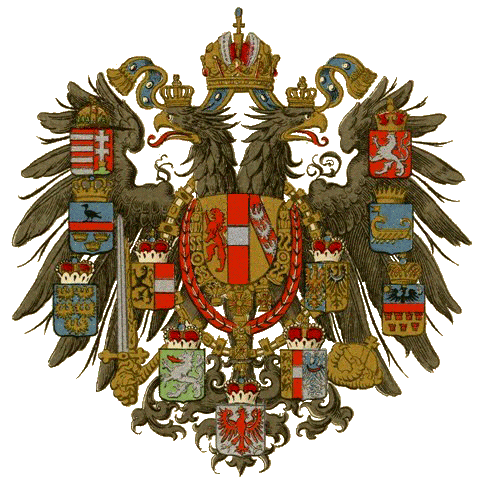
.jpg)

.jpg)
.jpg)
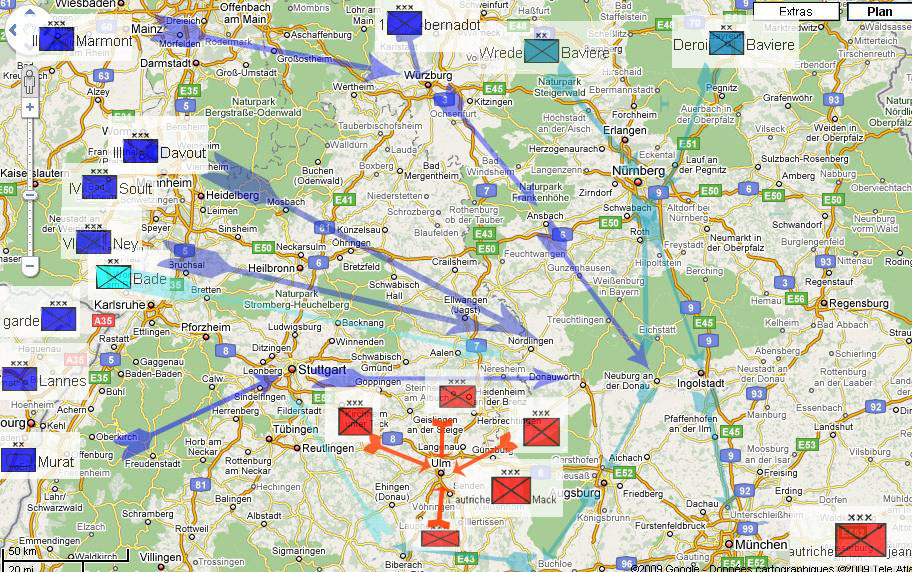 Torren
Torren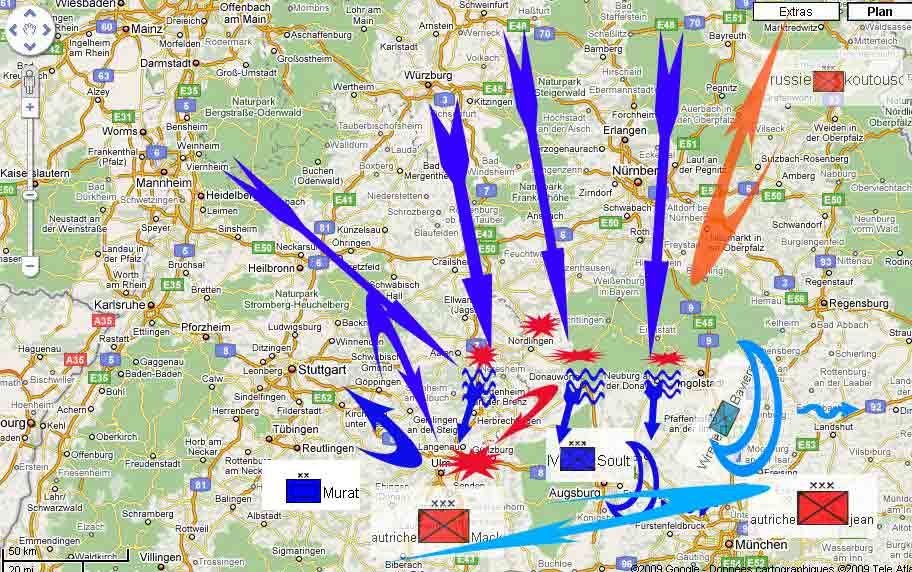
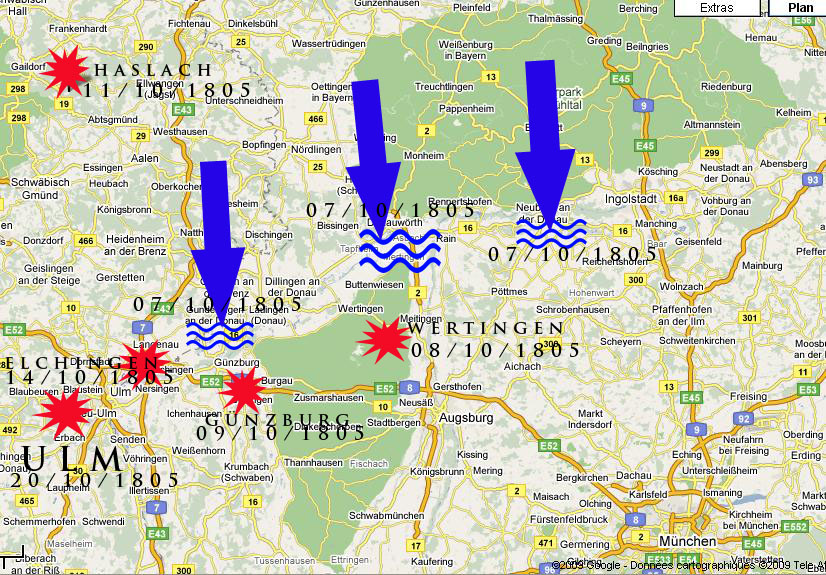
.jpg)
.jpg)
.jpg)
.jpg)
.jpg)
.jpg)
